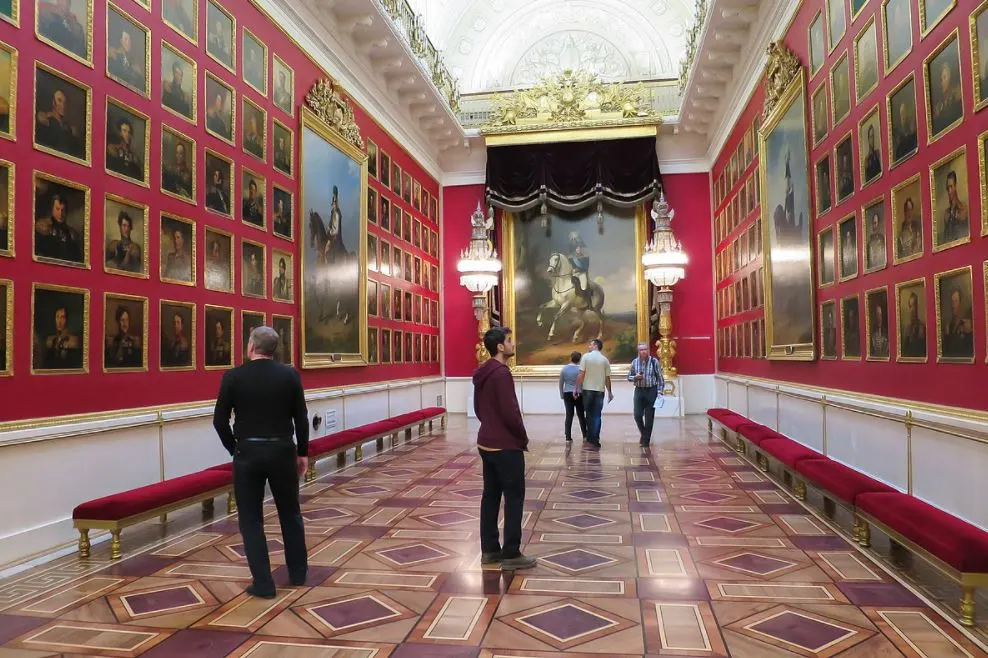One of the most amazing palaces in the world is located in the second-largest city of Russia and has an incredibly rich history.
In this article, we’ll take a closer look at some of the most interesting facts about the Winter Palace, an enormous palace that serves a completely different purpose today!
1. It’s located in the historical heart of Saint Petersburg
The Winter Palace is the former official residence of the Emperors of Russia and is an enormous palace in the heart of Saint Petersburg, the former capital of Russia and the second-largest city in the country after Moscow.
It’s situated on the south bank of the River Neva in between the Palace Quay and the monumental square fittingly referred to as Palace Square.

2. The palace was built at an enormous scale
With the contribution of numerous Emperors and Empresses following Peter the Great (1672-1725), the man who founded Saint Petersburg in the early 18th century, the Winter Palace ended up becoming one of the biggest palaces in the world.
And that’s exactly what the real purpose of this monumental building was, to impress everybody who visited it and glorify the power of the Russian Empire, the largest empire in the world by the end of the 19th century.
The main façade of the building has the length of 2 large football fields. It’s 215 meters (705 feet) long and 30 meters (98 feet) high, more than enough to impress just about anybody who stands before it.
It also features an estimated 1,500 rooms, 1,886 doors, 1,945 windows, and 117 staircases, dazzling figures, don’t you think?
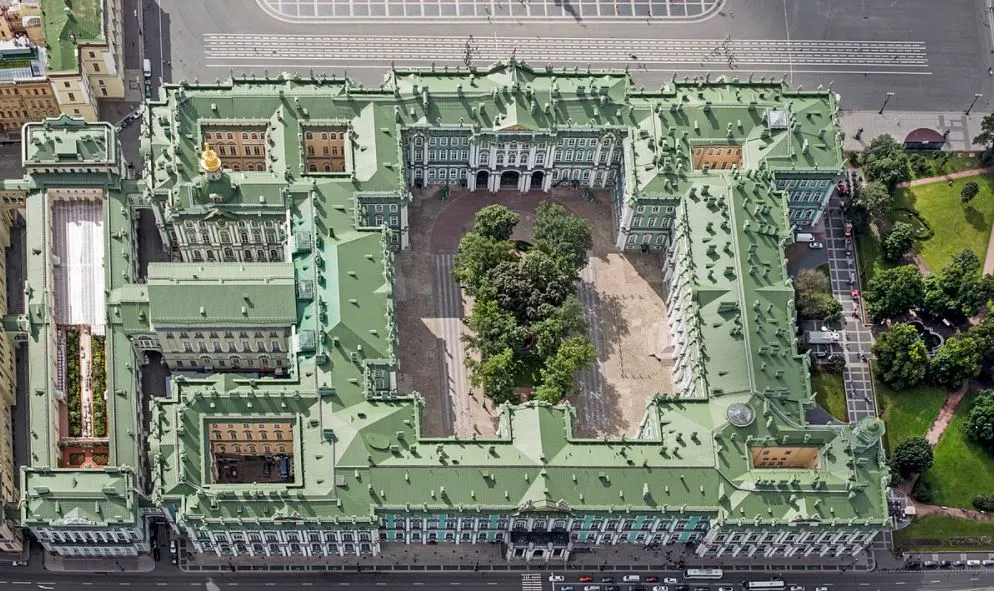
3. The first early 18th-century Winter Palace was much humbler
Obviously, the palace didn’t look quite as it does today shortly after Peter the Great founded the city following his so-called “Grand Embassy,” his tour of Western Europe, in 1698.

He became inspired by the great palaces in Europe he came across, most specifically the enormous Palace of Versailles near Paris, equally designed to awe its visitors.
The first palace was built right across the location of the current palace and was pretty humble compared to what the palace turned out to be. It was designed in the Flemish Renaissance style, now referred to as “Petrine Baroque.”
It was built between 1711 and 1712 and designed by Swiss architect Domenico Trezzini. as you see from the image below, it wasn’t much more than a large house and is now called the “First Winter Palace” (multiple more would follow).
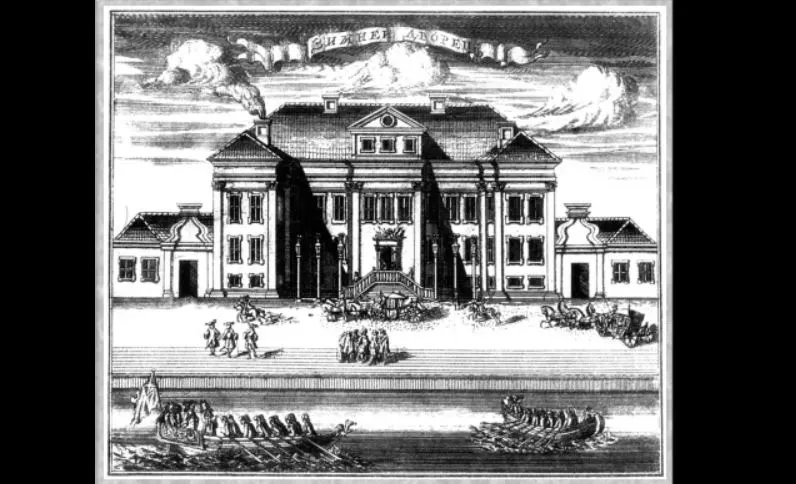
4. The third palace was built by Peter the Great’s grandson
Peter the Great had multiple construction projects going on in the early 18th century to build the new capital he just created, including, for example, the famous Peterhof Palace just outside the city.
The city was referred to as a “collection of villages linked together” and was far from the most popular place in Russia. It was a swampy area and there wasn’t that much sunlight to improve the mood of the construction workers.
He quickly became bored at his “small residence” and ordered the construction of the Second Winter Palace less than a decade later in 1721. It was still relatively humble, though, and it’s here that Peter the Great eventually died in 1725.
The so-called third palace was commissioned by his grandson, Peter II (1715-1730), and was an enlargement of the second palace which served as a terminating structure of the third version.
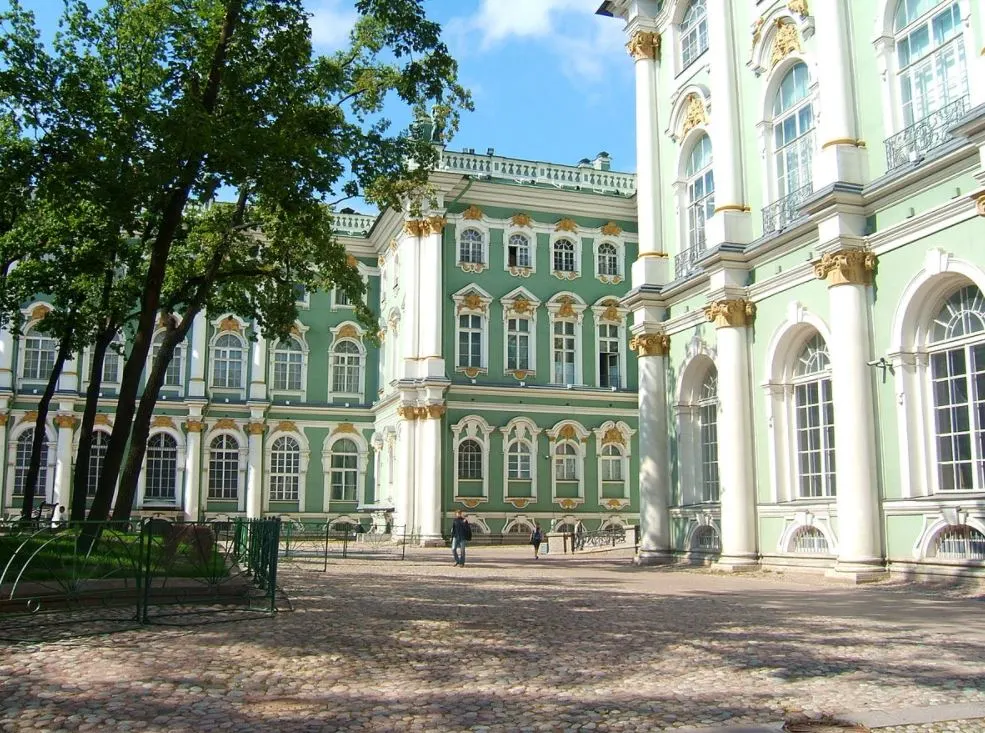
5. The building was designed by an Italian architect in a particular style
The second palace (completed in 1721) was designed by German Baroque architect Georg Mattarnovy (died in 1719) and the third version was designed by Italian architect Domenico Trezzini (1670-1734).
One of the most remarkable facts about the Winter Palace is that neither of these two versions forms the core of the fourth version of the palace, the structure that we see today.
When Anna Ivanovna, Duchess of Courland (1693-1740), became Empress of Russia in 1730, she moved into the nearby Apraksin Palace. This means that the core of the current palace is not the original palace of Peter the Great, but the palace built by a Russian admiral between 1717 and 1725.
She expanded Fyodor Apraksin’s palace and hired Italian architect Francesco Bartolomeo Rastrelli (1700-1771) to do so.

6. The exterior dates back to the reign of Empress Elizabeth
The style used by this renowned Italian architect would eventually be referred to as “Elizabethan Baroque,” referring to Elizabeth of Russia (1709-1762), the second-oldest daughter of Peter the Great.
It was during her reign that the palace was seriously expanded and turned into the monumental structure it is today. In line with the principles of trying to impress and seeing the construction of the palace as a matter of national pride.
She eventually ended up spending about 2,500,000 rubles and had increased taxes on various items to fund the project, even though the costly Seven Years’ War, a global conflict, (1756-1763) was still raging.
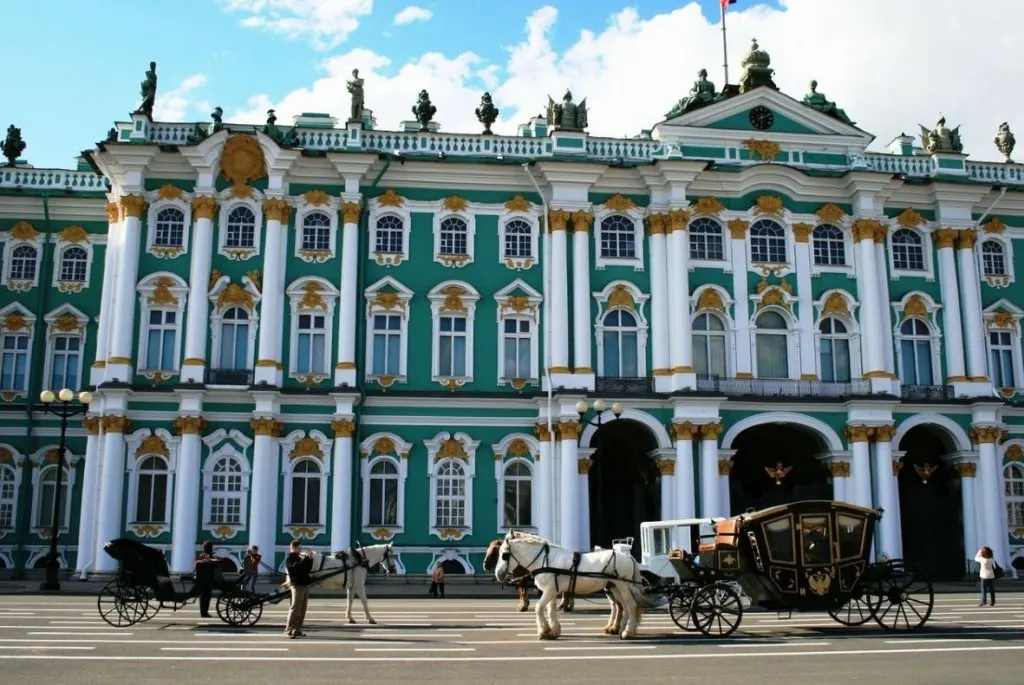
7. A great fire in 1837 destroyed much of the building’s interior
Even though the palace was just about completed during the reign of Elizabeth of Russia, multiple additions were made by later Emperors and Empresses.
Things went horribly wrong during one of these construction phases in the 1830s. For unknown reasons, the palace caught fire on December 17, 1837, and burned for several days, pretty much destroying the interior.
A few years earlier in 1833, French architect Auguste de Montferrand (1786-1858) was hired to expand the eastern staterooms and redesign several other rooms, including the throne room of the palace.
It’s assumed that the wooden partitions built during this renovation project helped to spread the fire all across the palace until extinguishing became near to impossible. A costly mistake for which the French architect was blamed.
The exterior of the palace remained intact and is still the original version.
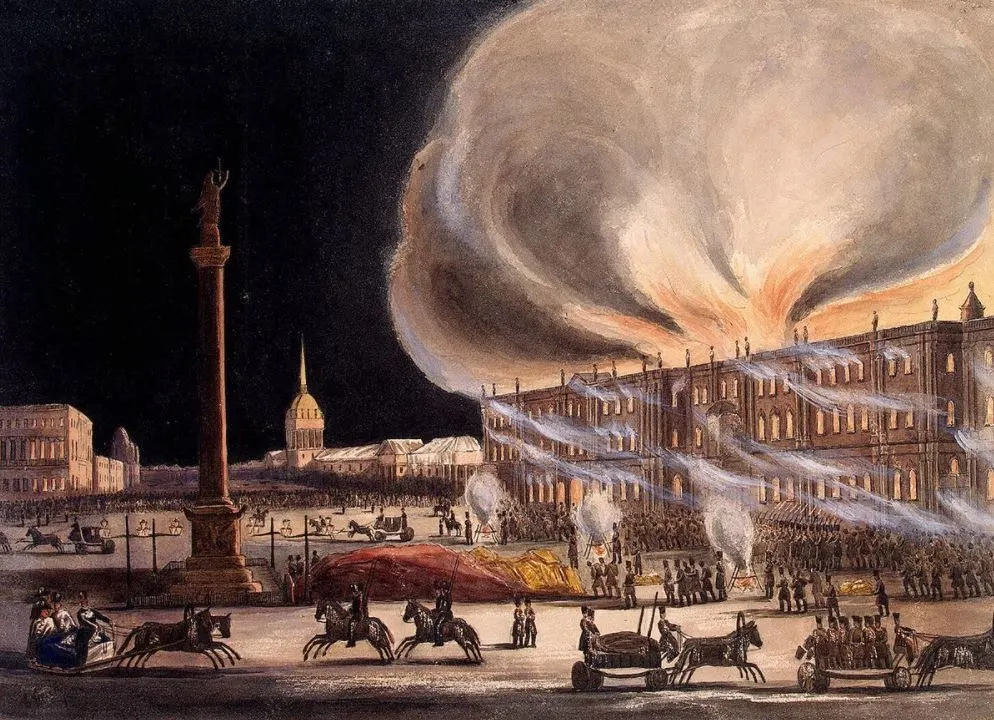
8. It stopped being the official Imperial residence in 1917
Even though the Winter Palace officially ended serving its purpose as the official residence of the Imperial Family, they already moved ut much earlier. During World War I, they lived at Alexander Palace at Tsarskoe Selo, about 24 kilometers (15 miles) south of the center of Saint Petersburg.
Following the February Revolution of 1917, the palace was briefly used as the seat of the Russian Provisional Government.
Following the October Revolution in that same year and the so-called “Storming of the Winter Palace,” the foundation of the Soviet Union was laid and the palace was turned into a part of the Hermitage public museums.
The initial collection on display was related to the history of the October Revolution.

9. It was fully restored to its original splendor following WWII
The interior of the palace was destroyed by the fire in 1837 and gradually rebuilt in the exuberant Rococo architectural style.
An equally devastating event was the “Siege of Leningrad” during World War II which happened between 1941 and 1944. Following the war, the damaged palace was again rebuilt.
Since the Fall of the Soviet Union in the late 20th century, various icons of the Imperial Family have been restored as well. This even includes emblems of the Romanovs and gilded eagles and decorations.
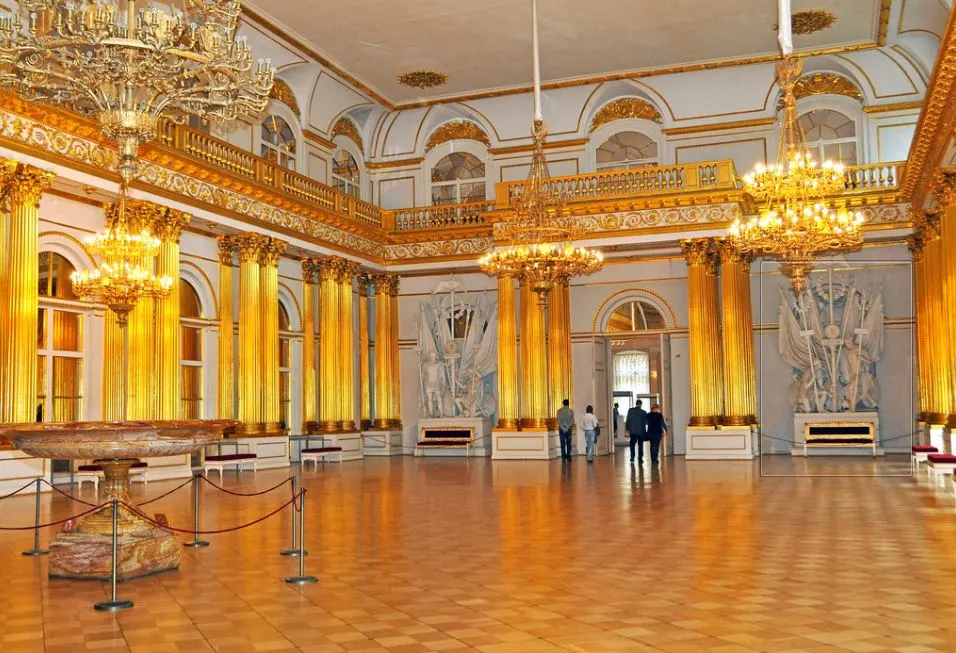
10. It’s part of one of the most famous museums in the world today
The Hermitage Museum in Saint Petersburg is one of the most famous museums in the world. It’s the second-largest art museum on the planet and the palace houses many items of the approximately 3 million pieces of the collection (of which most are in storage).
The museum comprises multiple buildings lining the Palace Embankment of the Neva River. Apart from the palace, the Small Hermitage, Old Hermitage, New Hermitage, and Hermitage Theatre, can be visited by tourists.
Just like the Louvre in Paris, the location of this fantastic museum couldn’t be much better than the rooms of a palace with such a rich history!
